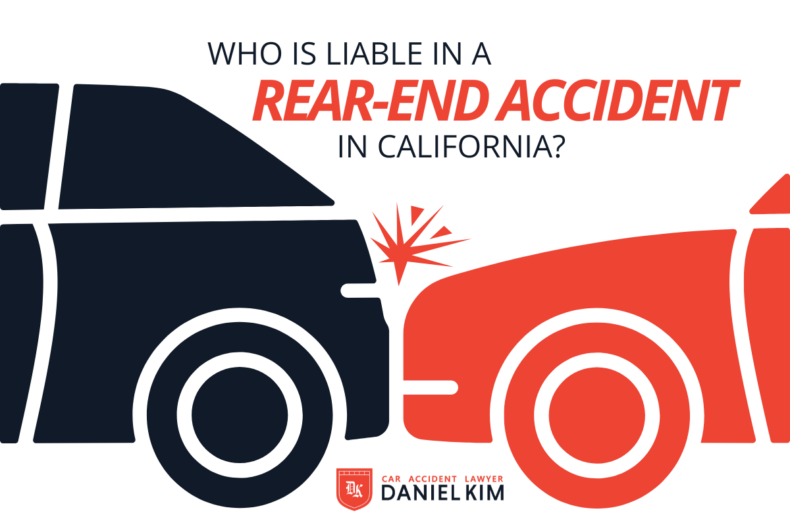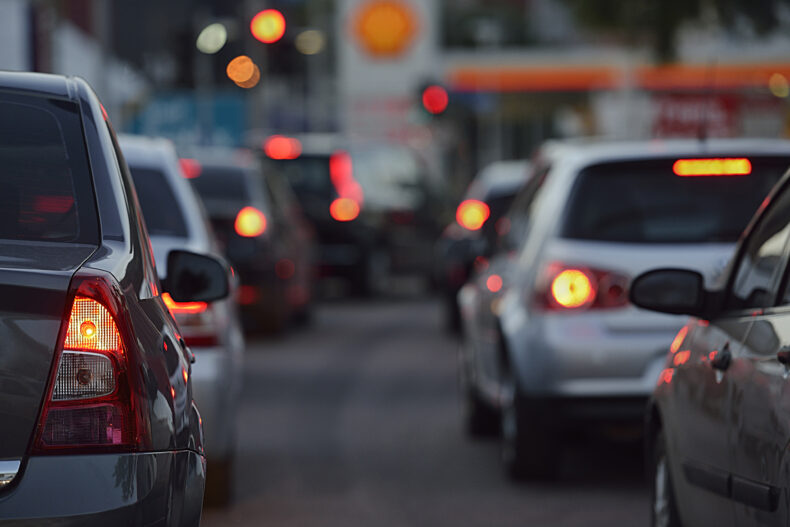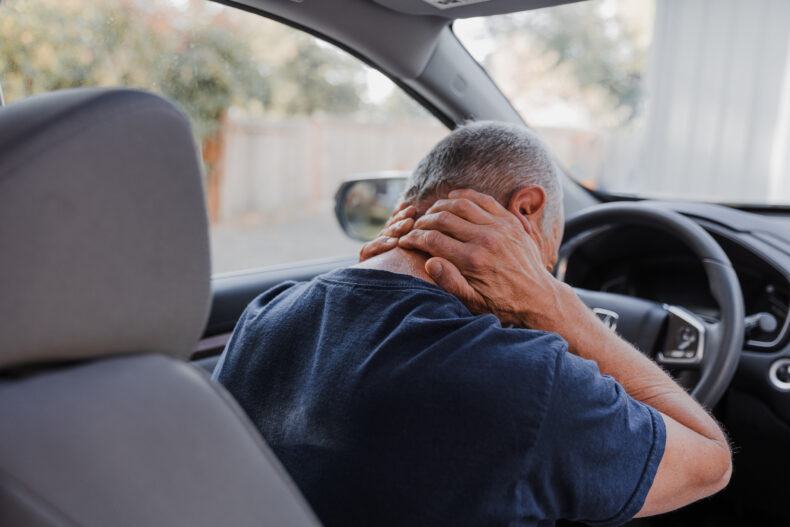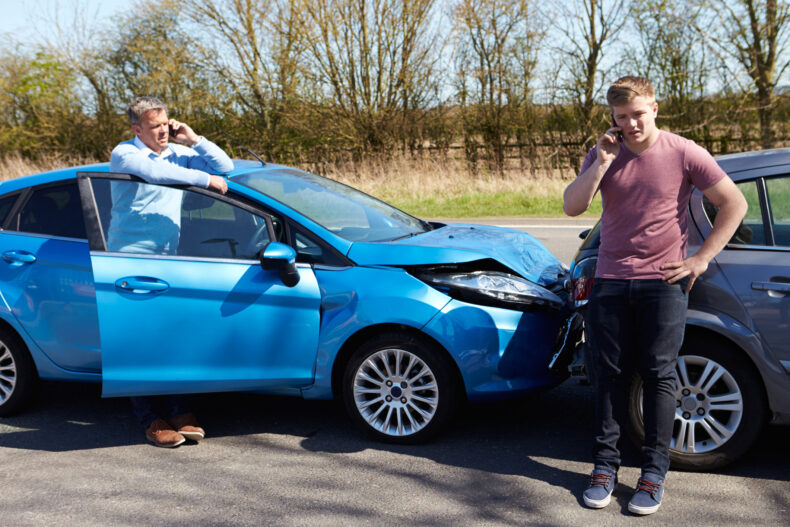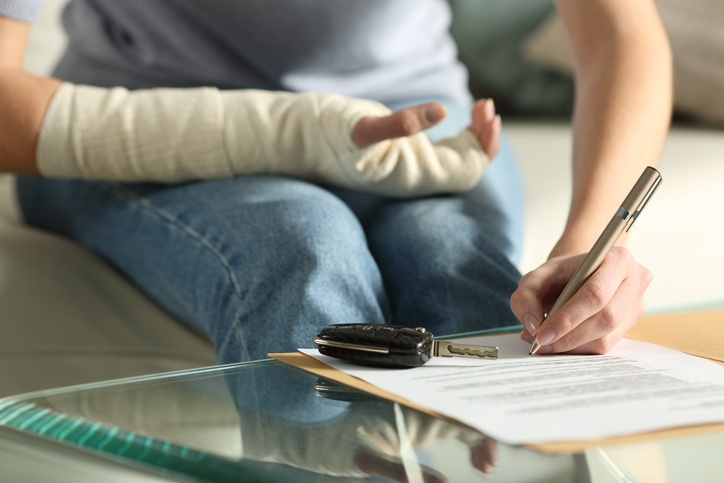Lawyer for a Rear-End Accident
Nearly a third of all motor vehicle accidents are rear-end collisions. It is one of the most frequent causes of whiplash and other car accident-related injuries. In California, rear-end accidents are a day-to-day occurrence, exacerbated by stop-and-go traffic. These types of accidents can happen at a red light or on a highway.
While a rear-end accident may be a minor fender-bender, it can also be serious and life-threatening if one or both drivers were speeding. If you sustained injuries in a rear-end collision, talk to an experienced car accident lawyer.
The Law Offices of Daniel Kim is the top personal injury law firm in California. We dedicate ourselves to helping injured motor vehicle accident victims recover maximum compensation. Call us today to schedule a free consultation at (800) 719-9779.
Common Causes of Rear-End Collisions
Some of the most common causes of rear-end collisions in California are:
- Tailgating – California law strictly prohibits tailgating, or following too closely. The law requires drivers to “follow at a safe distance” when traveling behind another vehicle, which is generally three seconds between you and the car in front of you. In bad weather conditions, drivers should leave even more distance. However, not all drivers leave enough space, leading to numerous rear-end collisions.
- Impaired driving – Alcohol, drugs, and even prescription pills can greatly impact a driver’s ability to scan the road and react to what is happening in front of them and around them. Intoxicated drivers may not accurately judge their distance or speed and cause an accident.
- Bad weather – While California typically is not affected by extreme weather conditions, the occasional windy or rainy weather can affect visibility. Drivers should slow down in poor weather and use their headlights.
- Distracted driving – Almost 75% of drivers admit to checking their cell phones, texting, and emailing while behind the wheel. Distracted driving is a growing problem all across the United States, especially among young drivers.
- Mechanical issues – Faulty brakes, tire blowouts, and steering problems are just some mechanical issues that can cause a rear-end accident. While these issues can arise from poor vehicle maintenance, they can also stem from a manufacturer defect.
- Sudden stops – Suddenly stopping for no reason on a highway is illegal, according to California Vehicle Code 22109. If a lead driver stops suddenly, they can be found primarily or partially at fault, depending on the circumstances.
Common Injuries from Rear-End Accidents
Suffering an injury in a car accident can significantly disrupt your daily life and lead to considerable stress for both you and your loved ones.
Dealing with any injury is bad enough, but when you have to contend with medical bills, ambulance bills, and insurance adjusters calling you every other day it can all become very overwhelming. Always make sure you get proper medical treatment after a motor vehicle accident.
These are some of the most common injuries from rear-end accidents:
- Whiplash – This is a type of neck injury that happens due to forceful, rapid back-and-forth movement of the neck, like the cracking of a whip. The most common symptoms of whiplash are pain and stiffness. About 20% of the people involved in rear-end crashes experience whiplash. Over 75% of those people experience pain for over 7 days, and about 50% will have pain and soreness for more than a year. A car accident victim suffering from whiplash may require months or years of physical therapy.
- Bruises, cuts, and lacerations – The main purpose of a seatbelt is to immediately and forcefully hold your body in place when your car is hit. In a rear-end collision, your body will automatically tend to slam forward and hit the safety straps on the seatbelt. This can cause severe bruising and injury to your neck and shoulders.
- Head injuries – In serious car crashes involving high speeds, victims may suffer head injuries, also known as traumatic brain injuries. Even in a low-speed collision where an airbag doesn’t deploy, drivers and passengers may sustain serious head and neck injuries.
- Back injuries – A back injury can impact a person’s everyday activities and job. Even at low speeds, the force of impact from a vehicle accident can cause compression of your spine and discs found in the lower back area of the spinal column. This is why traffic accidents often cause a herniated disc.
Who Is At Fault in a Rear-End Collision?
In a majority of rear-end accident cases, the rear driver is typically found at fault. This is because drivers are expected to maintain a safe following distance and be able to stop safely to avoid collisions. The driver who rear-ends another car will be legally responsible for the other driver’s vehicle damage, medical expenses, and other losses.
Yet don’t be surprised if the insurance company tries to say you (the car that got hit) are partially to blame for the accident, even though you got hit by the driver behind you. The insurance adjuster could say your brake lights didn’t function correctly or that you stopped too suddenly.
California’s comparative negligence laws allow a driver to pursue financial compensation from the other driver even if he or she was partially at fault.
Below are a few instances where the rear driver may not be at fault:
- Brake checking: If the front driver brakes suddenly and without warning, they may be held liable. Brake checking is against the law in California and can result in serious consequences. If this happens, the trailing driver may be found partially at fault or not at all liable.
- Reckless driving: Even when maintaining a safe distance, it can be impossible to stop in time if the leading driver is operating their vehicle recklessly.
- Sudden stops: If the front car stops suddenly and doesn’t give a fair and reasonable notice (hazard lights for example).
- Multi-vehicle pile up: In a multi-vehicle collision, a chain reaction can occur, with one vehicle striking another, leading to subsequent impacts on the car ahead.
How Much Is My Rear-End Accident Settlement Worth?
Every auto accident is different. Numerous factors influence the determination of a final settlement value and the duration required to reach a conclusive agreement.
Liability of all parties involved, the severity of the injuries, medical treatment, and the available insurance coverage all help to determine a settlement’s value. Credible and authentic evidence will also play a large role in the final settlement. This includes the police report and witness statements.
If you are an injured victim of a rear-end collision, you are most likely entitled to compensation for your damages. Economic damages are monetary losses that include lost wages, property damage, and medical expenses. Non-economic damages are intangible losses that include pain and suffering and emotional distress.
Negotiating a fair settlement with the other driver’s insurance company can be complicated and time-consuming. When you work with an experienced personal injury lawyer, you have a much better chance at recovering top compensation for your damages.
Contact Car Accident Lawyer Daniel Kim
When car accidents happen, there can be a lot of unanswered questions. Who was at fault? Was speeding a factor? Daniel Kim, a top car accident lawyer in Southern California, can answer all of your questions and help you determine who is liable for your damages.
Our California personal injury law firm operates on a strict contingency fee arrangement. This means we do not ask for upfront legal fees until we win a settlement for you. To learn more about your rear-end accident, call us today for a free consultation by phone or on our website.

